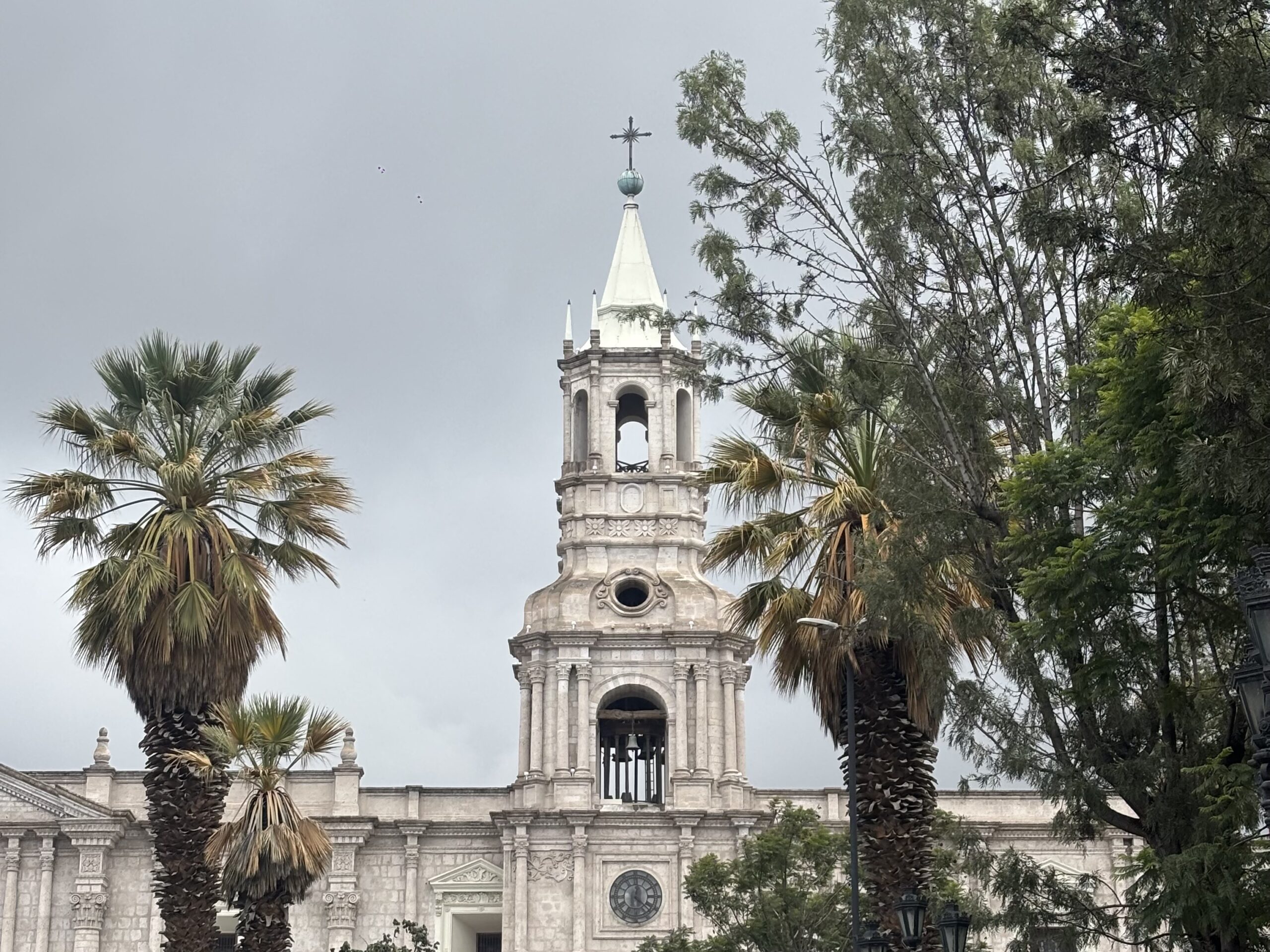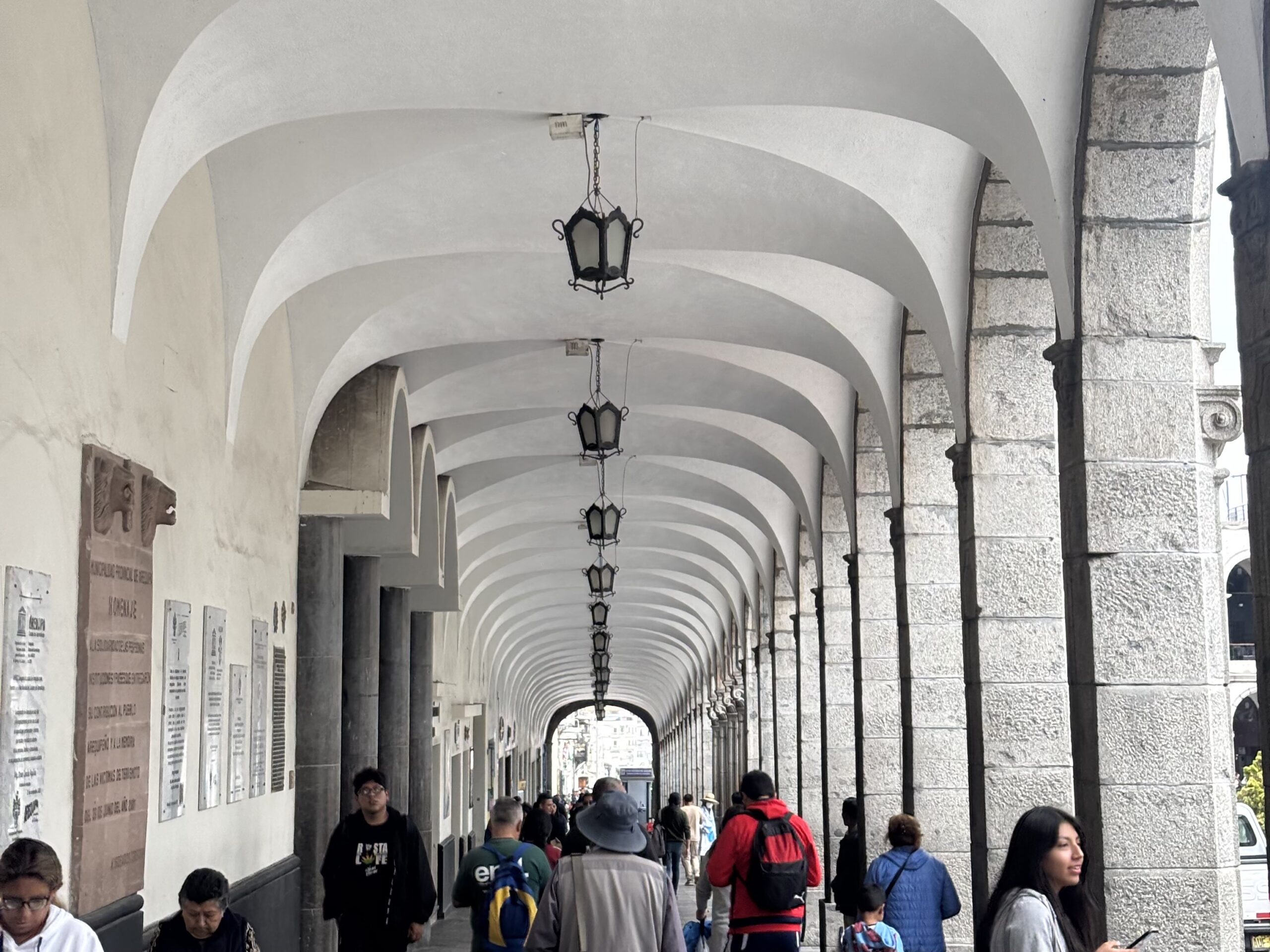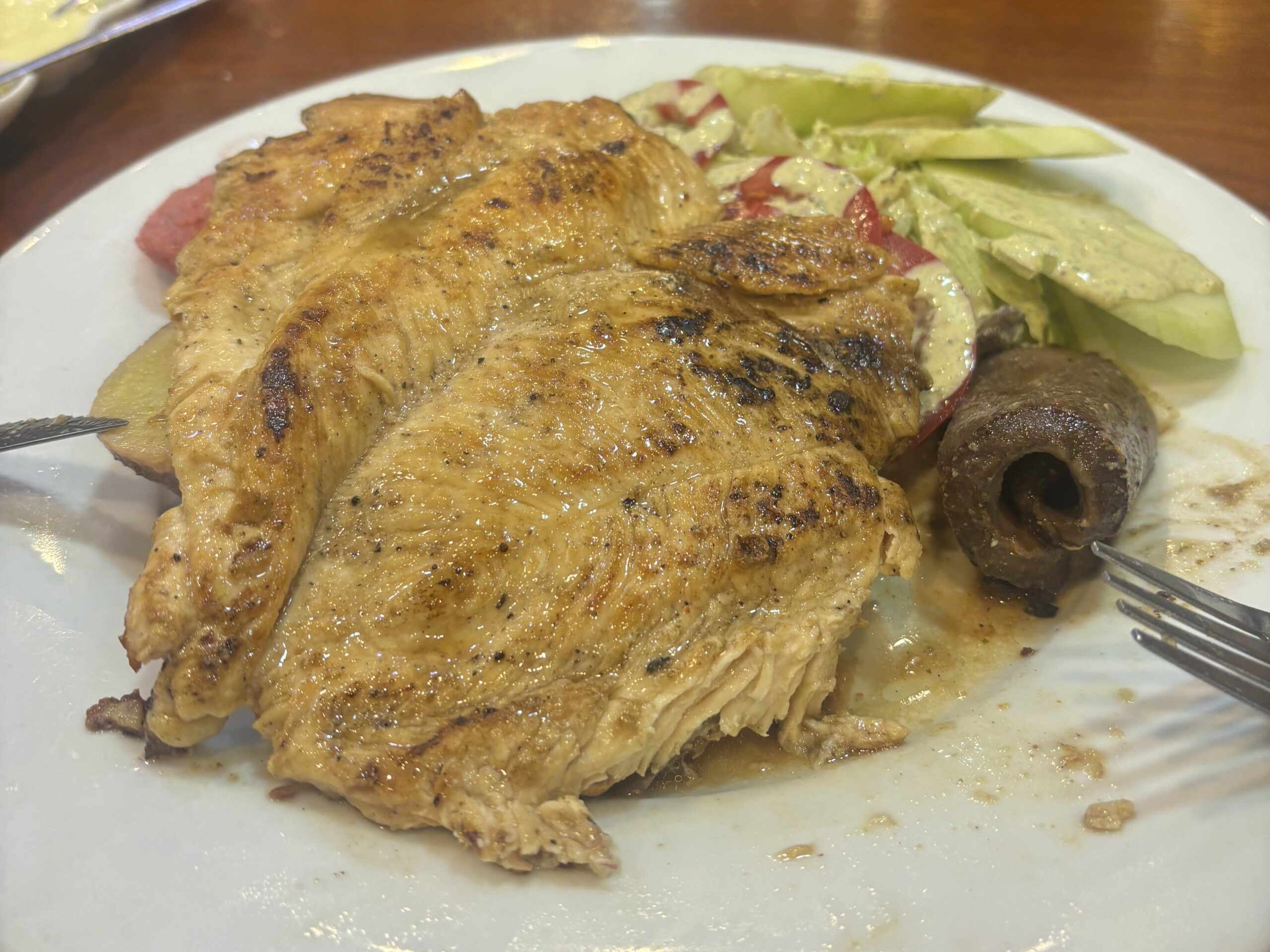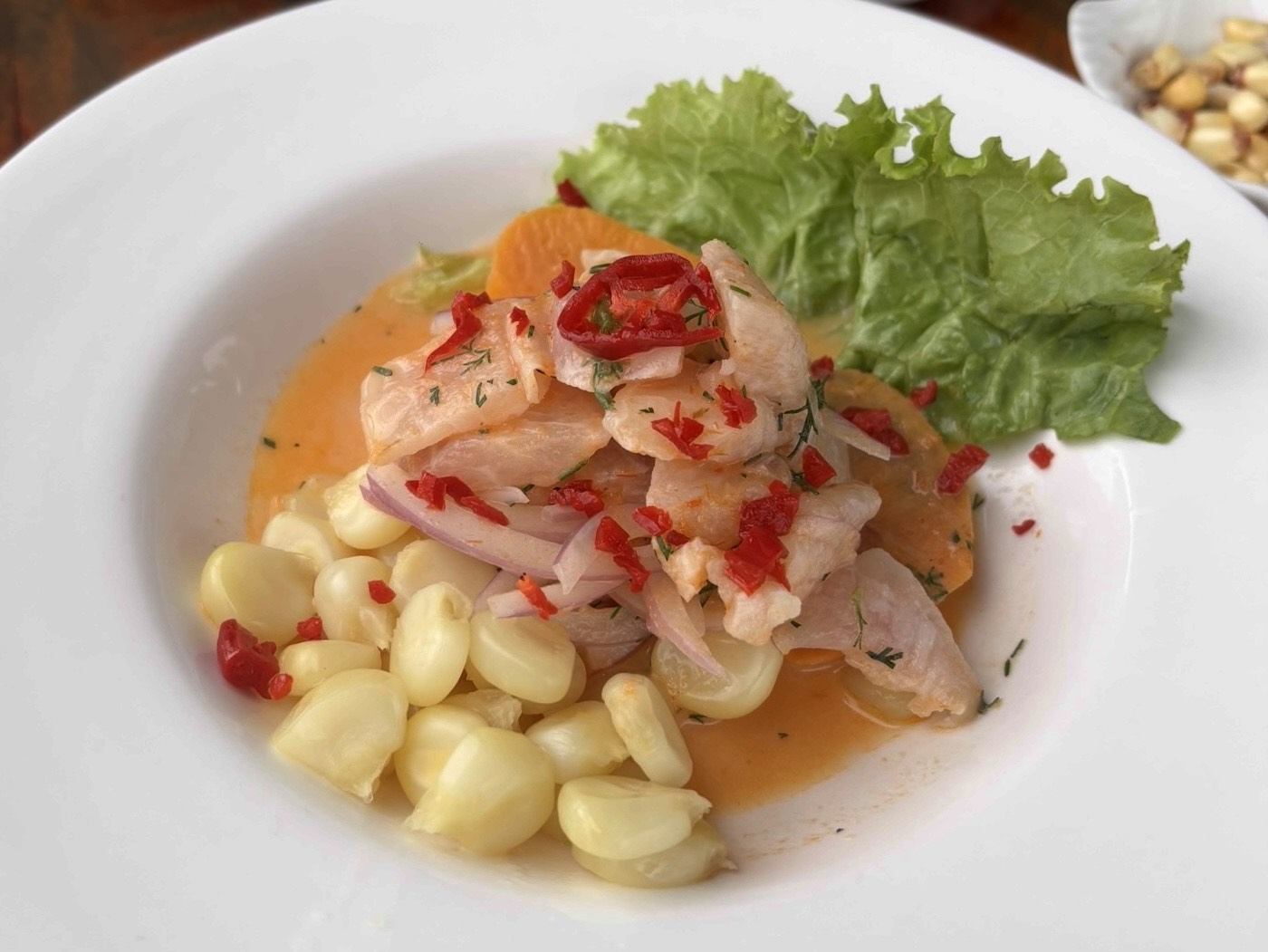
BasílicaCatherdal found in the main square of Arequipa.
I strolled into Arequipa, my first stop in Peru, after a long journey up from San Pedro de Atacama—officially marking the end of my solo travels. Out of all the countries I hit, I probably missed more cool places in Peru than anywhere else. That said, I’m seriously glad I didn’t skip over this gem of a city that not enough people seem to talk about when they plan their Peru itineraries.
Even though I didn’t get around to the famousColca Canyon (the second-deepest canyon in the world, by the way—twice as deep as the Grand Canyon), Arequipa was more than worth the stop. Peru’s second-largest city, Arequipa sits in the shadow of three dramatic volcanoes and has long been a cultural and intellectual hub of the country. Known as“La Ciudad Blanca” for its luminous buildings made fromsillar—a white volcanic stone quarried from the surrounding landscape—the historic center blends Spanish colonial and indigenous styles into what’s known asMestizo Baroque. Wandering through its sunlit streets and past grand facades like the 17th-century Basilica Cathedral, which stretches the full length of the Plaza de Armas, felt like walking through aUNESCO World Heritage Site—which, fittingly, it is.

Now, I mentioned way back at the start of my trip that I’d talk about South American food at some point, and Peru feels like the perfect place to do it. I mean, this country isglobally recognized as a culinary powerhouse—home to award-winning restaurants, diverse regional cuisines, and a fusion ofIncan, Spanish, African, Chinese, and Japanese influences that somehow all work together beautifully. Peru didn’t just meet the hype—it smacked it out of the park.
Whilst the others I went to Peru to meet up with were off hiking through Colca, I used my time in Arequipa to catch up on something even more essential:all the food they’d been raving about for the past week.
The first dish I dug into wasPollo a la Plancha—a straight-upmassive plate of grilled chicken, salad, rice, and crispy potatoes. Mine even came with some bonus steak and chorizo, just because Peru doesn’t mess around when it comes to portions. Think of it as Peru’s answer to a mixed grill—hearty, simple, and wildly satisfying.
Next on the list: I made it my mission to findcheap but good ceviche—the national dish of Peru and something I’d been dying to try. I’m not joking when I say I walkedover an hour and a half just to find the right spot. That search eventually led me to a small place calledPeruchoos, where I met the legend himself—Alexi.
Now, I never got a last name, but I don’t think I’ll ever see the name Alexi again without thinking of his guy.
I asked for a simple ceviche and he insisted I sit down for lunch—with him. The man literally stopped working just to eat with me. He mentioned that he just recently opened the place, Peruchoos, and wanted to show off a bit of what they were cooking to me. Alongside the freshest plate oflime-soaked fish with red onions, coriander, and chili I’ve ever had (and the first one to be honest), Alexi helped me pick a main dish to go with it. I can’t for the life of me remember the name, but it was an octopus and rice combo that wasdivine. Rich, savory, slightly spicy—everything you want in a seafood dish.

Pollo a la Plancha.

Ceviche (holy moly, this was fantastistic).
And on the side? He served mecancha—thosecrunchy, salty, toasted corn kernels you get all over Peru. Five words?Crispy. Nutty. Addictive. Better than chips. I couldn’t stop eating them.
All the while, we talked. Food, travel tips, life in Peru, just regular guy chat—it was probably thewarmest, most genuine hospitality I felt on the whole trip. No agenda, no upsell—just a good dude who wanted to share a meal and a bit of his world. A lunch I thought would be quick and easy was long and unforgettable.�
So after lunch, I decided: this was my guy for Peru.
Alexi’s Interview Transcript
Zach: So, can I just get you to state your name and what you do for a living?
Alexi: Yeah, my name is Alexi, I’m working for restorations. Yeah. And so, I’m really, I like explanations for the tourists, make the house Arequipa, what do you want to do in Arequipa, recommendation of food, recommendation of drinks, or history for the jungle, to Arequipa, the north, the south, enjoy the places.
Zach: Yeah. And so, you said, mentioned earlier you grew up in Arequipa, what was it like growing up here? Like, what was your favorite part about it?
Alexi: I grew up in Arequipa, in the center, because Arequipa too is a small one, it’s like a village. Yeah. Everybody knows in the center, the friends, friends of friends is my friend, so everybody knows in Arequipa, the bar is his friend, the restaurant too, if you’re going in the street work, maybe some guys say, hey, hola! So, everything is good, like a family.
Zach: So, it’s a good sense of community and stuff.
Alexi: Yeah.
Zach: And so, people all around the world, and in Peru, rave about the food here. What is there to rave about?
Alexi: The typical food, like a Mars. That’s the reason they make the traditional picanterias (Peruvian Eateries). Picanterias is the places, the typical food for the ancestors, the grandmother and daughters, and make it a restaurant for family, normally.And then, with the passing time, it’s opened the traditional picanterias, and the people working close to the picanterias going to eat really good and really big, because it’s a hard work, working the…
Zach: Work all day, eat all day, kind of thing.
Alexi: Yeah. And really safe food and good food.There is also many food like lomo saltado (Peruvian Stir-fry dish), chupe, caldo (soup or stew).It’s a lot of food.
Zach: What would you say your favorite food from the area is? Like, what would you recommend to everyone?
Alexi: Recommend? For me, actually, cuchatao, lomo saltado, seco de cordero (lamb stew), and soups.Soups, like chupe de camarón (shrimp soup), so really delicious. Only because sometimes the camarón (shrimp) is expensive.It’s like a crab.
Yeah. I don’t remember the name. What is the name? But this camarón is… Yeah, see? Like lobster.
Zach: Shrimp?
Alexi: Yea but the camarón is for the lake or the rivers. So it’s similar to a crab, but for water, no, they come to the sea.So, really good.
Zach: So, for people who come to Arequipa, what do they need to do here? Like, what is something they absolutely need to do?
Alexi: Yeah. First, stay in the center.See, like, the church, the principal, the main square, close the streets, the special streets, the San Francisco Street, all the rooms in the center of the main square.And then, city tour. The city tour is going to different places, traditional places to Arequipa. Not actually in the center, no? Traditional places is outside Arequipa, like Zocabaya, and then north, when you see the river Rio Chile, Mirador de Carmen Alto, Yanaguara is a special traditional village first, the name. Fu and Demenso, going to the Misti, no? Going to the Misti, enjoy the parties, because in different places have traditional parties, like Virgen of the, I don’t know, but it’s many places of the Virgen Candelaria, like Puno in Arequipa, two different places. And then, traditional fight, bullfights.
Zach: Oh, okay, bullfights.
Alexi: Bullfights.Yeah, yeah.Bullfights, the people is proud for bullfights. People have many bullfights, it’s in training, the bull for the fight.
Zach: Wow.
Alexi: It’s amazing. Yeah, and have money too. If the bull is win, have money a lot. And the people make a bet, I don’t know how they bought. If you say, I’m paying $1,000 for this bull.
Zach: Oh, it’s a bet, it’s a bet, yeah, yeah, yeah. I think everyone around the world kind of respect that. And so this is my one question I ask everybody I ask this. You know, there’s a lot of things wrong in the world today. What do you think is the biggest issue that we have today? It could be as big or as small as you want, anything that you can think of.
Alexi: I think it’s a big,yeah.
Zach: Yeah, okay.
Alexi: Yeah, big, big, yeah.
Zach: Okay, thank you. Thank you very much, I appreciate it, Alexi. Thank you so much.
Alexi: Thank you so much.